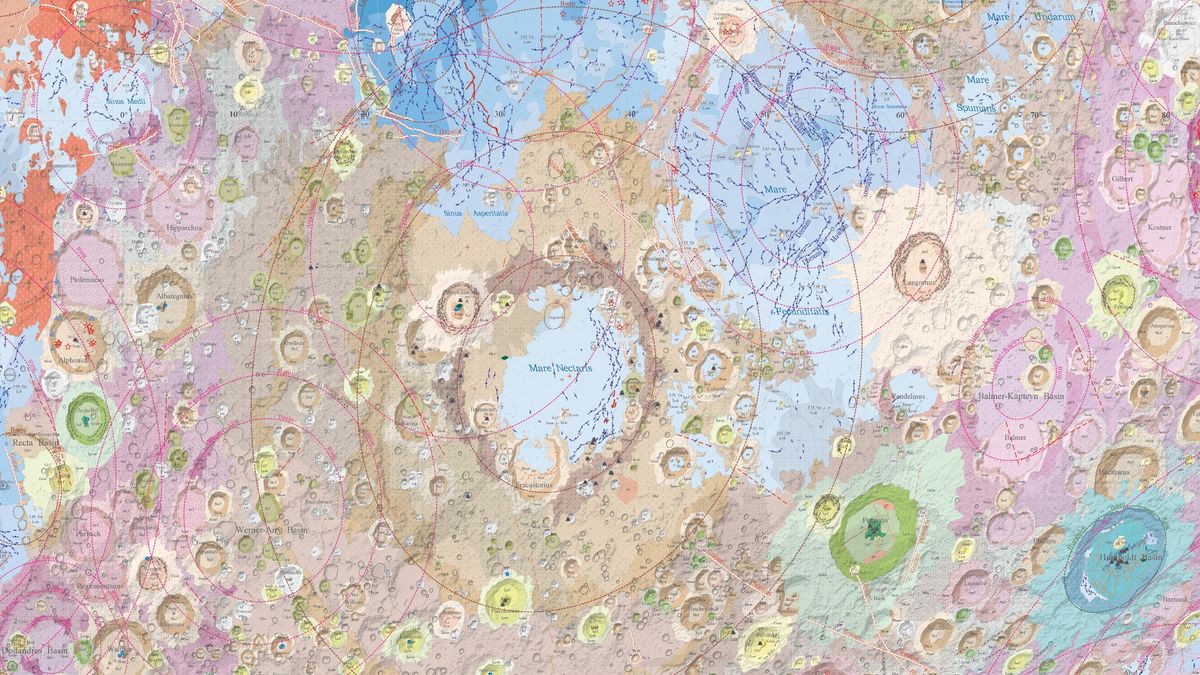China has revealed the most detailed atlas of the moon ever made. The high-resolution geological map is the first major update of lunar information since NASA’s Apollo program in the 1960s and 1970s.
The atlas, which took around 100 researchers more than a decade to complete, captures the lunar surface in exquisite detail, showing 14 categories of structures, 17 rock types, 81 impact basins and 12,341 craters.
Researchers began the mapping project in 2012 with the aim of making it easier to select landing sites and resource locations for China’s future moon missions. The scientists who made the atlas, which is available in both Chinese and English, say that it will be useful for other countries too.
“The geological atlas of the moon is of great significance for studying the evolution of the moon, selecting the site for a future lunar research station and utilizing lunar resources,” co-lead researcher Ouyang Ziyuan, a research professor at the Institute of Geochemistry of the Chinese Academy of Sciences, told the state news agency Xinhua. “It can also help us better understand the Earth and other planets in the solar system, such as Mars.”
Related: China will launch giant, reusable rockets next year to prep for human missions to the moon
The researchers created the atlas using data from the Chang’e-1 mission, an uncrewed spacecraft that scanned the lunar surface from orbit between 2007 and 2009. More recent observations, taken from the moon’s surface by the Chang’e-3 and Chang’e-4 lunar rovers in 2013 and 2019 respectively, confirmed the observations taken from orbit.
The researchers also cross-referenced their data with data from India’s Chandrayaan-1 probe and NASA’s GRAIL and Lunar Reconnaissance Orbiter missions.
The release of this atlas comes during a period of growing ambition for China’s space programs. China has recently landed rovers on the moon and Mars and completed construction of the Tiangong space station in 2022. It is also leading construction efforts of an International Lunar Research Station, which is slated for completion by 2030.
The China National Space Administration, China’s space agency, also launched a dark matter probe, an X-ray telescope to study neutron stars and black holes, and a quantum communications satellite.

Dr. Thomas Hughes is a UK-based scientist and science communicator who makes complex topics accessible to readers. His articles explore breakthroughs in various scientific disciplines, from space exploration to cutting-edge research.








